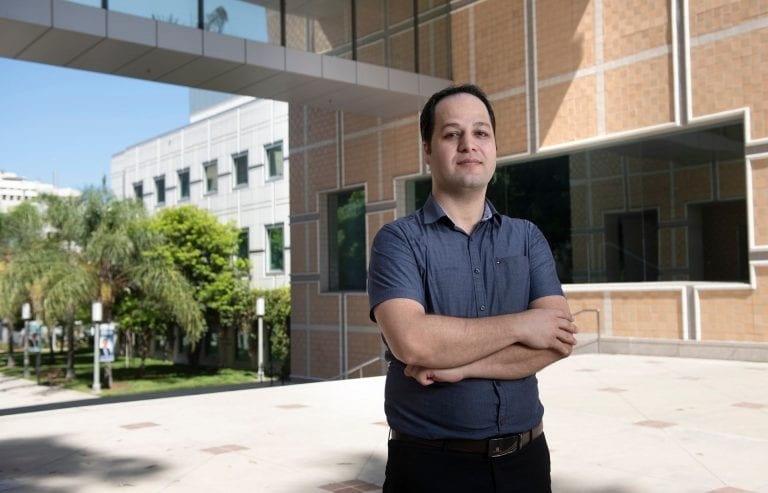Researchers at the University of California, Irvine have developed a novel self-powered, wristwatch-style health monitor that can wirelessly interact with a nearby smartphone or tablet and measure a wearer’s pulse without needing a battery or an additional power source.

“Imagine you’re out working in a remote location … and you need to keep track of your health information on demand, or there’s an incident, and you need to monitor someone’s vital signs urgently and accurately,” says Rahim Esfandyar-Pour, UCI assistant professor of electrical engineering and computer science and biomedical engineering. “This self-powered and wireless device allows you to do that without relying on a battery that can lose its charge.” Steve Zylius / UCI. Image Credit: University of California, Irvine.
Team members from UCI’s Henry Samueli School of Engineering discuss their creation, which was created through 3D printing of nanomaterials on flexible substrates for real-time as well as wireless monitoring of vital signs, in a study that was just published in the journal Nano Energy.
The present prototype functions as a self-powered radial artery pulse monitor, but the authors of the research claim that additional health indicators, such as heart rate, body temperature, or blood pressure, may be measured by only switching the sensor circuitry.
Imagine you’re out working in a remote location—anywhere, the desert on a mission, in mountains hiking or even a space station, for example—and you need to keep track of your health information on demand, or there’s an incident, and you need to monitor someone’s vital signs urgently and accurately.
Rahim Esfandyar-Pour, Study Senior Co-Author and Assistant Professor, Electrical Engineering and Computer Science and Biomedical Engineering, University of California–Irvine
“This self-powered and wireless device allows you to do that without relying on a battery that can lose its charge and has the thermal runaway issue [overheating of lithium-ion batteries that can lead to combustion],” added Esfandyar-Pour.
The device offers health information in two different ways. In one mode, tapping the wristband’s nano energy generators produces energy that fuels the sensor electronics, which quickly causes the wearer’s pulse rate to flash on an LED display. When a smartphone or other comparable device is held close to the wearable, the second mode operates.
The wristband and mobile device can wirelessly exchange data and power, and biophysical data is plotted and shown on the smartphone’s screen, thanks to embedded near-field communication technology.
The invention’s self-powered and on-demand features are made feasible by triboelectric nanogenerators, which generate electricity by applying pressure or thumping to a surface. The titanium-based MXenes, a relatively new type of ultrathin 2D material with distinctive electrical and mechanical characteristics, are used to create the TENGs.
MXene layers are just a few atoms thick and are elastic, bendable, and may be printed onto the surface of flexible bandage-like material or a wearable wristband.
This innovation achieves many significant outcomes in one package. It enables continuous, battery-free, wireless, and on-demand health monitoring anytime and anywhere. It’s made with low-cost and flexible materials and can be tailored to meet a variety of wearable bioelectronic sensors’ requirements. It’s a flexible, completely configurated system.
Rahim Esfandyar-Pour, Study Senior Co-Author and Assistant Professor, Electrical Engineering and Computer Science and Biomedical Engineering, University of California–Irvine
Electrical engineering and computer science postdoctoral fellows Prativa Das and Sang Won Lee, as well as UCI PhD candidates Qian Yi, Xiaochang Pei, and Huiting Qin, are additional authors of the work. The Henry Samueli School of Engineering contributed funding.
Journal Reference:
Yi, Q., et al. (2022) A self-powered triboelectric MXene-based 3D-printed wearable physiological biosignal sensing system for on-demand, wireless, and real-time health monitoring. Nano Energy. doi.org/10.1016/j.nanoen.2022.107511.